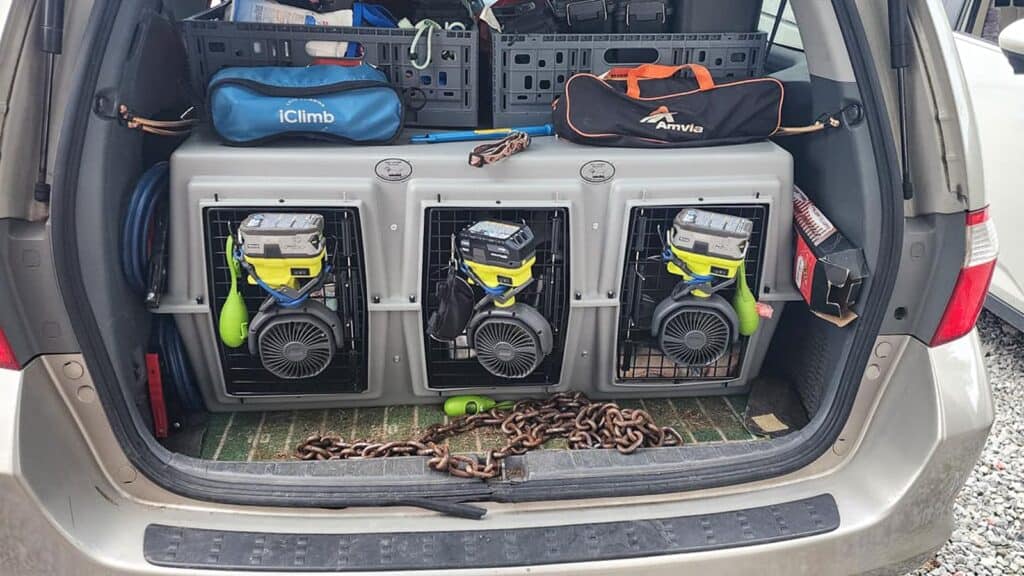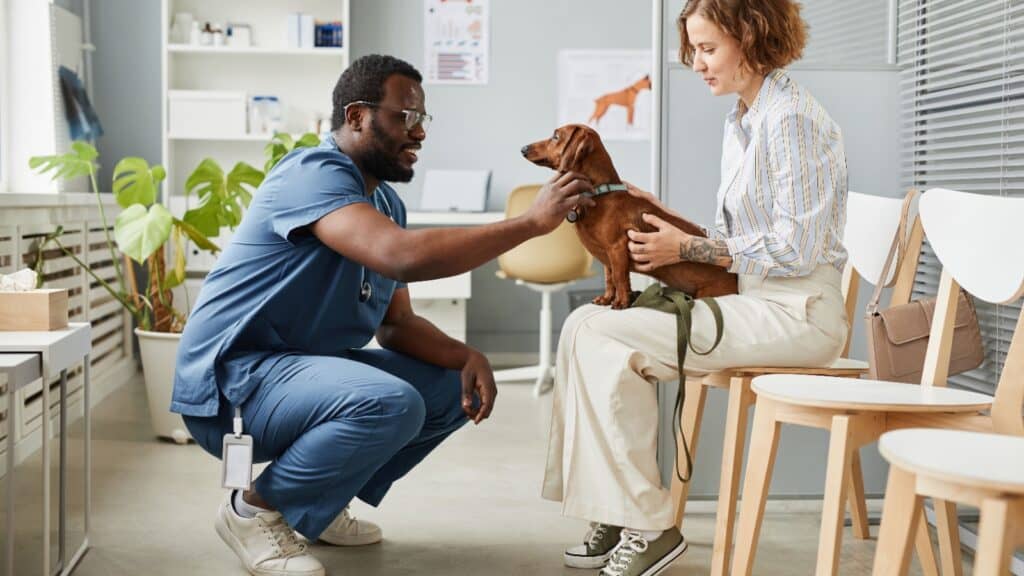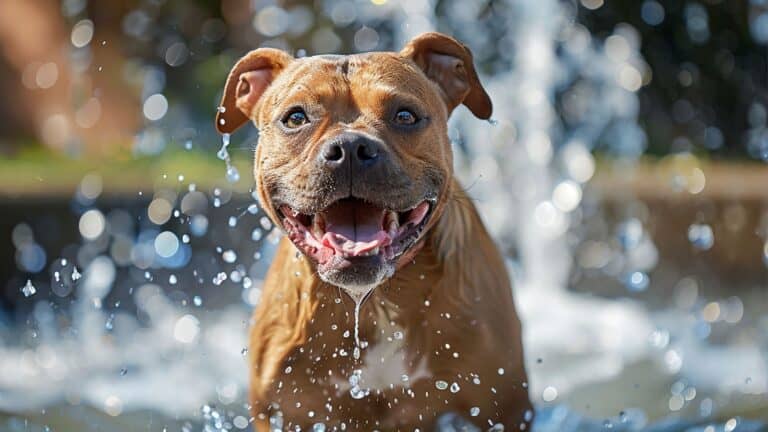How To Travel With Your Dog: Planes, Trains, Automobiles – and Boats!
Traveling with your dog can be a rewarding experience, but it requires careful planning and consideration to ensure safety and compliance with various regulations. Whether you are traveling by car, plane, train, boat, or subway, understanding the laws, safety measures, and best practices is crucial. We have what you need to know for a smooth and enjoyable journey with your canine companion. And if you have the bucks for private plane travel, we have the details about how you and your pooch can travel together in style.
Traveling by Car With Your Dog

Traveling by car is by far the most common means of conveyance, so we will address it first. There are safety precautions to take, and there are even laws in certain states.
Canine Car Travel Laws and Regulations

In the United States, there are no federal laws mandating specific restraints for dogs in cars, but many states have their own regulations. For instance, states like New Jersey and Rhode Island require pets to be restrained or contained in a vehicle. In New Jersey, drivers can face fines if their pet is not restrained properly.
Safety Measures for Canine Car Travel

Look for Certification Labels: Certified crash-tested products usually display certification labels from reputable testing organizations. The Center for Pet Safety (CPS) is a leading independent organization that certifies pet safety products. CPS conducts rigorous crash tests on pet restraints, crates, and carriers to ensure they meet high safety standards. Products that pass these tests receive CPS certification. Look for the CPS certification label on the product packaging, or the manufacturer’s website.
Some companies conduct safety tests outside of the CPS jurisdiction and can be good choices, as well. Beware of false claims regarding crash testing especially claims of in-house crash testing. If a crate has been tested and passed by CPS it will be certified with a rating. If a crate has not been tested it is not an indication of whether or not the crate is safe; it might just means it wasn’t included in a study. Do your due diligence.
Canine Car Travel Safety Measures

This post may contain affiliate links. Please see our disclosure policy for details.
- Dog Seat Belts: Ensure your dog is secured with a dog seat belt or harness that attaches to the car’s seat belt system. This helps prevent distractions and protects your dog in case of an accident.
- Crates and Carriers: Use crash-tested crates or carriers that can be securely fastened in your car. Crates provide a confined space, reducing the risk of injury during sudden stops or crashes.
- Barrier Dividers: For larger dogs, a barrier divider between the back seat and the front seats can prevent them from climbing into the front seat and causing distractions.
- Hydration and Breaks: Keep your dog hydrated and plan for regular breaks during long trips. This allows your dog to stretch, relieve themselves, and stay comfortable.
- Temperature Control: Most cars have air conditioning and dogs will benefit. If your car has a dual system, make sure that the rear air conditioner is set to cool them down. If there is no rear air conditioner, consider using special fans for the crates, as pictured above.
- Never Leave Your Dog Alone: Never leave your dog alone in the car, especially in extreme temperatures. Cars can quickly become too hot or cold, posing serious health risks.
Dog Crates To Consider For Automobile Travel

I travel extensively with my dog and have had many types of kennels. Currently, the all-metal East Coast Crates are my crate of choice for their construction and design. I have used them for automobile, as well as plane travel.
Some recommended crates

- Ruff Land: Ruff Land Kennels, (formerly known as Ruff Tough Kennels; seen above), are highly durable and have been tested for impact resistance, making them a safe choice for car travel. They feature one-piece roto-molded construction, stackable design, metal door insert.
- Gunner Kennels G1: Gunner Kennels is renowned for its robust and crash-tested dog crates. Their crates have undergone rigorous testing and received high marks for safety. They feature double-wall rotomolded construction, escape-proof door, non-slip feet, and secure tie-down pins.
- Variocage: Variocage offers some of the safest dog crates on the market, specifically designed for car travel. These crates have been extensively crash-tested and are known for their unique construction that minimizes impact in the event of a crash. Features: Adjustable length, escape hatch, crumple zone design to absorb impact.
- East Coast Crates: Crafted for maximum strength and durability out of the highest quality anodized aluminum. Critical components such as rivets, hinge, trim, haps, rods, nuts and bolts are stainless steel. Lifetime guarantee, and the only aluminum crate approved by the General Services Administration (GSA) to sell to the military. All East Coast Crates exceed IATA airline requirements for approved kennels and are ideal for shipping and travel.
Dogs Hanging Out of Windows

If your dog is safely restrained, it will not be hanging its head out the window. While some folks still think this is fine, and even cute (thinking the dog is enjoying the breeze) please note that this is not safe for the dog – or for humans. This poses several serious risks and can be harmful for various reasons:
- Risk of Injury from Debris: When dogs hang their heads out of the car window, they are exposed to flying debris, dust, insects, and other particles. These can cause injuries to their eyes, ears, and nose. Debris can lead to eye infections, scratches on the cornea, or even more severe damage that could require veterinary treatment.
- Potential for Accidents: A sudden stop, turn, or collision can cause your dog to be thrown out of the window, leading to severe injury or death. Even if the car is moving slowly, a dog can easily fall out of the window, risking broken bones or other serious injuries.
- Ear Damage: The force of the wind blowing directly into a dog’s ears while hanging out of the window can cause damage to their ear canals. This can lead to infections or other ear-related issues that could be painful and require medical attention.
- Distractions to the Driver: Dogs hanging out of the window can be a distraction to the driver, potentially causing an accident. Sudden movements or the dog’s excitement could divert the driver’s attention away from the road, increasing the risk of collisions.
- Exposure to External Hazards: Dogs hanging out of the car window are more exposed to external hazards, such as passing vehicles, branches, or other obstacles. They could be hit or scratched, causing injuries that might not be immediately apparent.
- Legal Concerns: In some places, allowing a dog to hang out of the car window may be considered a violation of animal safety regulations. Certain states have laws requiring pets to be restrained in a vehicle, and failure to comply could result in fines.
Traveling by Plane With Your Dog

Traveling by plane has become more complicated; there are fewer airlines allowing canine travel than there were years ago, and temperatures are warmer, in general.
I have personal experience flying with dogs. The first thing I always tell people is, know your dog! If you have a dog who is nervous, prone to anxiety, and/or is very environmentally sensitive (to sounds, smells, strange places), then do not fly with your dog. The dogs I have flown with all had very stable personalities and did quite well.
Airport Pet Relief Areas

Many airports have pet relief areas, both inside the terminal and out. If you are traveling with your dog in the cabin, you will have to check in and go through security quite a while before your flight. Give your dog time to go outside, and then after you go through security, look for an indoor location for them to relieve themselves before boarding. The one above is one of the smaller areas we have seen; there are often entire private rooms.
How To Tell If Your Dog Is Air Travel Appropriate

The dogs that I know that fly successfully, particularly in cargo, are dogs that are not environmentally sensitive, and that are used to travel in general. For instance, a dog that travels often by automobile, and is used to being in strange hotels, homes and places such as dog shows, fairs and other canine events will have an advantage over a dog that is a pet who is home most of the time, with little exposure to the outside world.
Use your best judgement. Just as we humans can find air travel exhausting and stressful, so can dogs.
Canine Plane Laws and Regulations

Air travel regulations for pets vary between airlines, but most major airlines follow guidelines set by the U.S. Department of Agriculture (USDA) and the International Air Transport Association (IATA). Always check with specific airlines. Some key points include:
- Health Certificates: Most airlines require a health certificate from a veterinarian, stating that your dog is fit to fly. At a minimum you will need a current rabies certificate. If flying internationally, many more requirements come into play, which can range from additional vaccinations to quarantine upon arrival. Do your homework.
- Carrier Requirements In Cabin: Dogs must travel in an International Air Transport Association (IATA) approved carrier that fits under the seat in front of you for in-cabin travel. The carrier must allow your dog to stand, turn around, and lie down comfortably.
- Carrier Requirements In Cargo: Dogs must travel in an International Air Transport Association (IATA) approved carrier. Different airlines have different requirements, as well. In general, the dog must be able to stand up, with clearance, and turn around comfortably.
- Breed Restrictions: Certain breeds, particularly brachycephalic (short-nosed) dogs like Bulldogs and Pugs, may be restricted due to their susceptibility to respiratory issues. Restriction can be heat related or general. Please note that this is a hot button issue within the canine world. There are airlines, such as Alaska Airlines, that have incorrect information on their websites. For instance, they have Bull Terriers listed as brachycephalic, and they are not. The parent breed club (BTCA) and others have addressed the issue, even with veterinarian documentation, which has not rectified the situation. If anyone reading this works within Alaska Airlines and would like to help, please contact me dede@dedewilson.com.
Safety Measures for Canine Plane Travel

- In-Cabin Travel: Whenever possible, keep your dog in the cabin with you. This is the safest option and reduces stress for your pet.
- Cargo Travel: If your dog must travel in the cargo hold, choose direct flights to minimize travel time. Ensure the crate is well-ventilated and secure.
- Pre-Flight Preparation: Familiarize your dog with their carrier before the trip. Take short trips to help them get used to it. Avoid feeding your dog a large meal right before the flight to prevent stomach upset.
- Hydration: Provide a water bottle that attaches to the crate, ensuring your dog has access to water throughout the journey.
- Medication: It might be tempting to give your dog something to calm it down, but medications can also affect respiration. Please consult with your veterinarian.
Private Plane Transport

If you own your own plane, your dog can, of course, travel with you in the cabin. Before you think this is just a crazy notion, consider the fact that there are companies that cater to private plane travel with dogs.
- K9 Jets: Bills themselves as a “Pet Dedicated, Pay-Per-Seat Private Jet Service”. A direct flight from NJ to Lisbon for you and your dog will cost about $12k as of this time. LA to Paris is about $18k.
- BARK Air: A newer airline, BARK Air is here to “deliver a white paw experience. We built our flight experience for dogs first, from the ground up”. NY to San Francisco will cost about $6500. Chicago to Miami, about $6k.
- Private Jet Charter: This company has over 30 years of experience flying animals on their pet-friendly private jets. They fly cats, birds, and reptiles, too.
Traveling by Train With Your Dog

Train travel with your dog is possible but will vary depending on train service. Here’s what you need to know:
Canine Train Travel Laws and Regulations

Train travel regulations for dogs vary by country and train service. In the U.S., Amtrak allows small dogs (up to 20 pounds) on most routes for a fee. In Europe, many train services are pet-friendly, but rules vary between countries. Please check with individual train systems.
Safety Measures for Canine Train Travel

- Advance Booking: Always check the pet policy of the train service and book in advance, as there are often limits on the number of pets allowed per train.
- Carriers: Small dogs should be in a carrier that fits under the seat. Larger dogs may need to be on a leash and muzzled, depending on the train’s policy. Sleepypod makes great carriers.
- Comfort and Safety: Ensure your dog is comfortable during the trip. Bring their favorite blanket or toy, and make sure they have access to water.
- Breaks and Hydration: Plan for bathroom breaks and keep your dog hydrated, especially on long journeys. Some train stations have designated pet relief areas.
Traveling by Subway With Your Dog

Believe it or not, your dog can go with you on some subway systems.
Canine Subway Travel Laws and Regulations

Traveling with dogs on subways can vary significantly depending on the city and transit system. Here are some notable examples:
New York City Subway: The Metropolitan Transportation Authority (MTA) allows dogs to ride along with their humans if they can fit in a bag or container and “are carried in a way that doesn’t annoy other riders.” Service animals aren’t required to be carried in bags or containers
Practice Makes Perfect

Practice with your dog at home, so they are comfortable in a carrier before you head to the subway. Our friend Caitlin made sure that her miniature bull terrier, Beryl, was ready for her city adventure.
Other Subway Transit Systems

- London Underground: Dogs are allowed on the London Underground, but they must be on a leash or in a carrier. Dogs are not allowed on escalators, so use the stairs or elevators instead.
- Paris Metro: Small dogs can travel for free if they are in a carrier or bag. Larger dogs must be muzzled and require a half-price ticket.
- Tokyo Metro: Dogs must be in carriers that can fit on your lap or under the seat. They are not allowed to walk or sit outside the carrier.
Safety Measures for Canine Subway Travel

- Carriers: Ensure your dog is in a well-ventilated, secure carrier. It should be comfortable and allow them to lie down and turn around.
- Leashes and Muzzles: Ensure your dog is on a leash, and muzzled if required, by the transit system.
- Comfort: Bring a small blanket or toy to make the carrier more comfortable. Ensure your dog is accustomed to the carrier before traveling.
- Hydration and Bathroom Breaks: Plan for bathroom breaks before and after the subway ride, and keep your dog hydrated.
- Avoiding Crowded Times: Travel during off-peak hours to reduce stress and avoid crowded trains.
Traveling by Boat With Your Dog

You can enjoy time out on the water, in a boat, with your dog if you take safety precautions. At the very least, it is prudent to only take a dog out on a boat if the dog is water safe in general. We have an article about dogs and water safety for you.
Canine Boat Travel Laws and Regulations

Traveling by boat, whether a private vessel or a ferry, requires specific considerations for your dog’s safety. Ferry services often have different rules regarding pet travel.
Safety Measures for Canine Boat Travel

- Life Jackets: Equip your dog with a well-fitted life jacket designed for dogs. This is crucial for their safety, especially if they fall overboard.
- Leash and Harness: Always keep your dog on a leash while on deck. A harness can provide better control and prevent them from slipping out.
- Designated Relief Areas: Use designated pet relief areas on ferries or create a designated spot on your private boat for your dog to relieve themselves.
- Hydration and Comfort: Keep your dog hydrated and provide a shaded area to protect them from the sun. Ensure they have a comfortable place to rest.
- Acclimatization: Before embarking on a long boat trip, take your dog on shorter voyages to get them used to the motion and environment of the boat.
General Tips for Traveling with Dogs

- Identification: Ensure your dog has a collar with an ID tag and is microchipped with up-to-date contact information. You can even use collars with GPS trackers, as seen above.
- Health and Vaccinations: Make sure your dog is up-to-date on vaccinations and carries proof of vaccination when traveling.
- Packing Essentials: Pack a travel bag for your dog, including food, water, bowls, medications, waste bags, and a first aid kit.
The Takeaway

Traveling with your dog can be a delightful experience with proper preparation and attention to safety. Whether by car, plane, train, boat, or subway, understanding and adhering to the necessary regulations and safety measures will ensure a smooth and enjoyable journey for both you and your furry companion.
How To Protect Your Dog From Heat Stroke This Summer And What NOT To Do!

Summer is here and it’s essential to prioritize your dog’s safety and well-being by taking proactive steps to prevent overheating. Dogs are more susceptible to heat-related illnesses due to their inability to sweat like humans, making it crucial for pet owners to be aware of the signs, prevention methods, and emergency procedures to ensure their dog stays cool and healthy. In the most serious cases of canine dehydration, severe fluid shortage can lead to the failure of the kidneys and other organs.
In addition, we keep seeing posts, on Facebook in particular, that have incorrect, and even dangerous information. All of the information here is evidence-based. READ: How to Protect Your Dog from Heat Stroke This Summer and What NOT To Do!
How Many Of These Foods Did You Know Could Kill Your Dog?

Our canine companions bring immense joy into our lives, and it’s our duty to ensure their well-being. However, certain everyday foods found in our homes can pose serious risks to their health. Here’s a look at foods that should never be fed to dogs or left within their reach.
To be prepared, have contact details of your local veterinarian, the nearest emergency clinic, and the ASPCA Animal Poison Control Center (888-426-4435) at hand. READ: How Many Of These Foods Did You Know Could Kill Your Dog?
Understanding The Surge In Veterinary Costs: Is It Becoming Too Expensive To Have A Pet?

If you own a pet, we bet you have noticed that veterinary care costs are escalating, leaving many of us with sticker shock and struggling to secure timely appointments. There are reasons for this burgeoning phenomenon; we unveil the many factors steering this surge. Read: Understanding The Surge In Veterinary Costs: Is It Becoming Too Expensive To Have A Pet?
Join Us

Join us on this empowering journey as we explore, celebrate, and elevate “her story.” The Queen Zone is not just a platform; it’s a community where women from all walks of life can come together, share their experiences, and inspire one another. Welcome to a space where the female experience takes center stage. Sign up for our newsletter so you don’t miss a thing, Queen!







